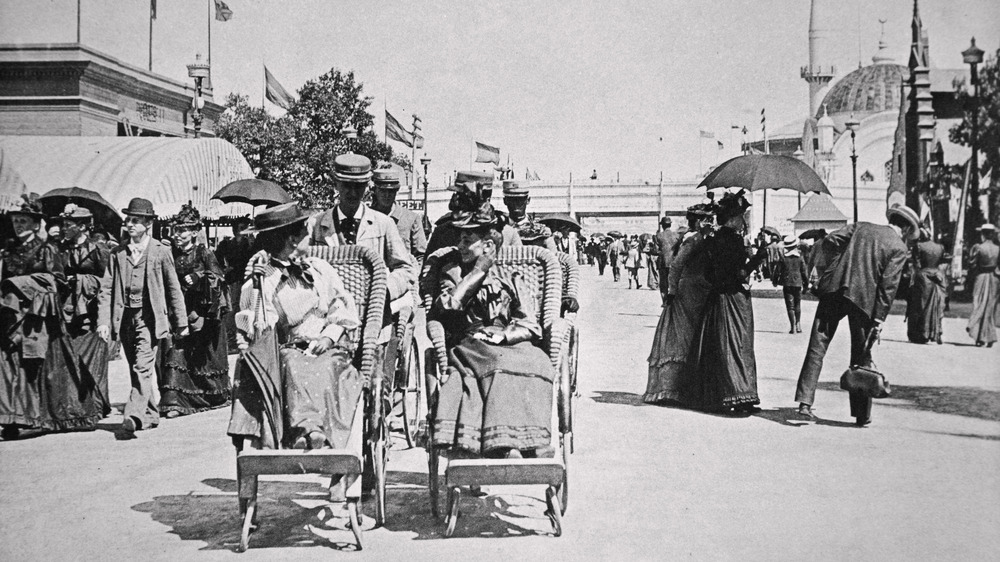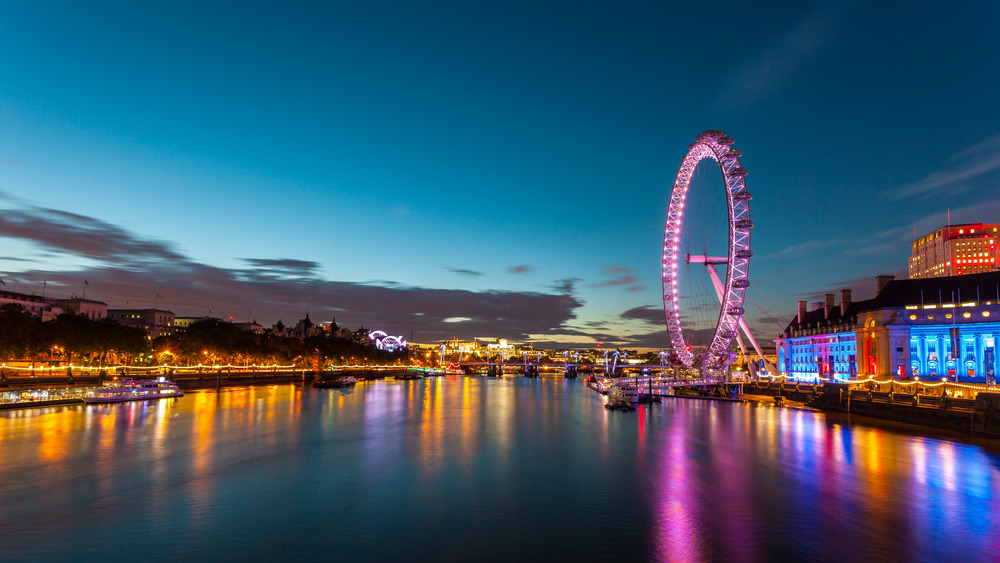The Truth Behind The World's First Ferris Wheel
When the Ferris Wheel debuted at the 1893 World's Columbian Exposition in Chicago, the public embraced the event's tallest attraction — at 264 feet — that allowed them to soar above the city for more than 10 minutes.
Daniel Burnham, the lead architect for the World's Fair, wanted a design that surpassed the impact of the 984-foot Eiffel Tower, unveiled at the 1889 Exposition Universelle in Paris. "Mere bigness was not what was wanted," according to Hyde Park Historical Society. "Something novel, original, daring and unique must be designed and built if American engineers were to retain their prestige and standing."
An engineer from Galesburg, Illinois, George Washington Gale Ferris Jr., suggested a giant metal wheel. His idea, according to the Chicago Architecture Center, featured 36 gondolas that carried 60 people in each one. The design would hold a possible 2,160 individuals all riding the rotating wheel at once for 10 to 20 minutes. The ride made one revolution that had six stops for loading and featured a nine-minute rotation.
At first, Burnham worried about the vehicle's safety, but after several tests, the Ferris Wheel became the fair's big attraction. "For many, the Ferris wheel took them as high up as they'd ever been — and views did not disappoint," according to the Chicago Architecture Center. "As passengers traveled through the air, they could see out over Lake Michigan and glimpse new vistas of the city."
The Ferris Wheel goes global
Despite over 1.4 million customers — all who coughed up 50 cents a ride (about $14.47 today, according to CPI Inflation Calculator) — the Ferris wheel, then called the Chicago Wheel, remained idle on the Midway until 1894. It was then was removed and transplanted to a location on North Clark Street from 1895 to 1903. It moved again and appeared at the 1904 World's Fair in St. Louis, Missouri.
The structure was dynamited in 1906, and its remains were sold for scrap metal instead of being preserved in a museum. Not an auspicious ending for an amusement staple that now graces entertainment parks around the world. Soon after the wheel's dismantling, other Ferris Wheels vied for height supremacy, with the 1895 creation of the 308-foot-tall Great Wheel in London and the 328-foot Parisian version, the Grande Roue. "Though the Ferris Wheel has maintained a prominent place in its country of origin," according to the Observation Wheel Directory. "In more recent years it has been European and Asian cities that have taken the lead in creating bigger and more spectacular observation wheels."
Some spectacular Ferris Wheels include the 525-foot Star of Nanchang in China and the 541-foot Singapore Flyer in Singapore. A shorter wheel, but still a popular destination is the 443-foot London Eye in England, which 3.5 million people visit yearly. The Wheel's creator never saw the success of his invention. He faced several lawsuits over patents and profits, before going bankrupt. He died of typhoid in 1896 at the age of 37.

